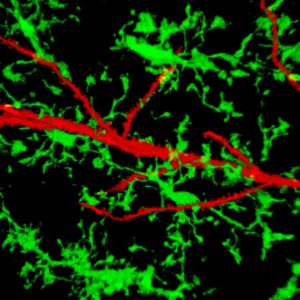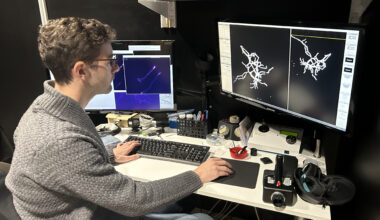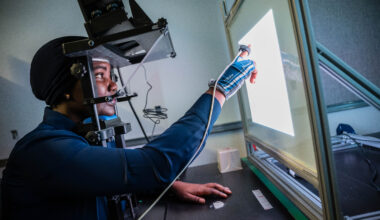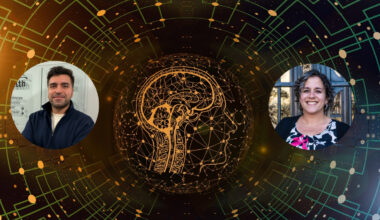“It’s not just about the lab or the science,” says Dr. Lasse Dissing-Olesen, who recently completed his PhD in Dr. Brian MacVicar’s lab. “The feeling of accomplishment comes from so many different things.”
After six years in Vancouver, Lasse has accomplished a lot of great things.
Arriving six years ago with a Master’s degree from the University of Southern Denmark and all of his possessions in a single backpack, Lasse joined the MacVicar lab to study the role of glial cells. In May, he left Canada for Harvard University with a PhD in Neuroscience, with his Canadian wife and their daughter, and a network of friends and colleagues both inside the scientific community and outside of it.
“Science is transitory, but the experience is tremendous,” he says. “I cannot emphasize how grateful I am to Dr. MacVicar for taking a chance with me, and how exciting it has been to part of such a diverse, multicultural lab at UBC.”
Lasse defended his thesis (Title: Novel Modes of Communication between Neuronal Activity and Microglial Process Dynamic) on April 21.

The dendrites of one neuron [red], and microglial cells [green]
“A hallmark of scientific maturation and a great predictor of future success is when a student interacts with senior scientists as a true peer. That is when creativity, drive, rigor and experience all come together and progress is made,” says Dr. Cheryl Wellington, who adjudicated Lasse’s thesis defense. “It was a delight to see Lasse defend his PhD studies with such thorough knowledge and marked generosity in how this work could be used in the future.”
Lasse’s legacy will be his enthusiasm and his passion for research, but it will also be the scientific contributions that he leaves behind, including a simple but very useful new tool. During his time at the Djavad Mowafaghian Centre for Brain Health, Lasse developed and implemented a method called SNAPSHOT, a technique that allows for the fixation and visualization of dynamic structures in acute brain slices.
“The neat thing about this simple method is that I managed to establish it in parallel with addressing my own research questions, and it has already allowed me to contribute to several of my colleagues’ research. I sincerely hope that people will continue to use it and keep improving it,” says Lasse.
Lasse took a month off with his family before joining Dr. Beth Stevens’ lab at Boston Children’s Hospital at Harvard Medical School as a post-doctoral fellow supported by a fellowship from the Danish Lundbeck Foundation. He will continue studying the role of microglia, only this time from a neurodevelopmental perspective.
“I’ll be using a lot of what I learned at UBC, no doubt,” says Lasse. “I’m so excited to contribute to our understanding of how microglia are involved in shaping and maintaining our neuronal network.”


